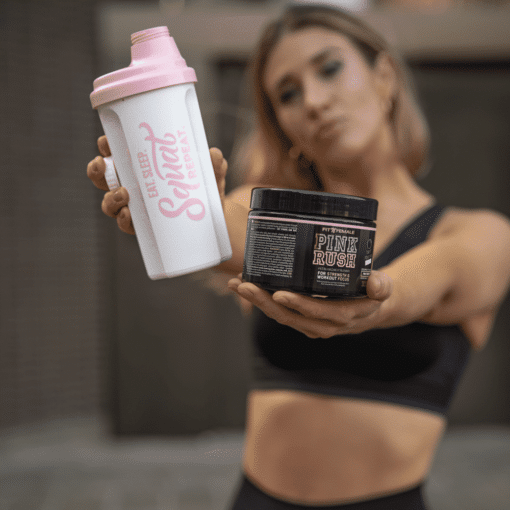What do you think of a cardio workout that gives your cardiovascular system a double challenge? We are talking about the high intensity interval training (HIIT). It makes you slimmer. You get fit faster and save a lot of time. Instead of one long aerobic session at a constant speed, interval training involves several very intense or fast periods interspersed with slower intervals for recovery.
Through this type of cardio workout, you burn more calories both during the sessions and up to 24 hours afterwards. The latter is very important because the afterburn effect can reduce fat just as much as the actual workouts. This superiority of HIIT sessions over steady state cardio workouts has been confirmed by a wide variety of studies.
As you begin interval cardio training, keep the following five cornerstones in mind to maximize your results and minimize the risk of injury:
1. step by step
HIIT is very effective. However, you can't master this form of training right away because it is very strenuous. You need to have acquired a certain basic level of aerobic training. Usually, a one-month cardio workout is enough, in which you have trained three times a week for at least 20 minutes each time at a constant speed.
In the beginning, you probably won't be able to do a full interval session. Continue to train as usual, initially adding two to three intervals of about 30 seconds into the workout. As your fitness progresses, you can add more intervals until your session is HIIT from start to finish after the warm-up. You can do intervals for the entire duration of your workout or for a shorter time or at a lower intensity. Increasing the number of intervals doesn't turn your workout into a full-blown interval workout, but it does provide your body with a great way to build endurance and strength.
2. find an interval mode that you enjoy
If you don't like jogging, you probably won't like interval running. If you don't like a particular type of workout, you won't be able to keep it up for long. Therefore, use a type of HIIT workout that you like and that fits into your training program.
The following criteria should definitely be included in your interval exercises:
- Use the larger muscle groups (like your legs) to get your heart rate up faster and burn more fat.
- You need to be able to accelerate to your top speed as quickly as possible and decelerate just as quickly.
You can certainly use atypical workouts for your program. For example, do burpees for 30-60 seconds and then run loosely for a minute before stepping on the gas again. As long as you work hard and fast, you can combine all types of interval exercises.
3. think about your leg training
Structure your interval sessions so they don't interfere with your leg strength exercises and vice versa. After a heavy leg workout, you won't be able to reach peak performance in interval training the following day, at least. Overtraining can diminish your progress and negatively affect your recovery. HIIT, in turn, can fatigue your legs and deplete glycogen - the carbohydrates stored in your muscles. Depending on how much leg training drains you, you shouldn't do HIIT for at least 24 hours before or after. During that time, you can do aerobic cardio instead.
For bodybuilders, interval training just before the competition is useful to quickly burn the last fat reserves. However, this is only advisable for advanced and appropriately experienced athletes.
4. pay attention to your post-workout meal
Many people who want to lose body fat are quick to neglect the post-workout meal, which is so important for getting the carbohydrates and protein you need. It is your key to a successful workout. HIIT is not an endurance run you can do on an empty stomach. It doesn't work. So you have to treat your interval sessions the same way you treat your strength sessions. You also wouldn't train your chest without eating a good meal before the workout.
The shorter the interval between your post-workout meal and your training session, the faster the proteins and carbohydrates it contains must be digested by your body. This is how you nourish your muscles and provide them with the important amino acids. You won't need as many carbohydrates for interval training as you would for a hard strength session. This is especially true if fat loss is your goal. Ten to twenty 20 grams should be enough. Fat intake should be as low as possible, as they are harder to digest. Don't forget to take classic supplements like caffeine, beta-alanine, and BCAAs, and make sure to always have enough water to drink.
5. listen to your body
When your body feels tired, it needs its rest. Maybe you can do a slow cardio workout at a steady pace. Don't overdo it or it will affect the next few days as well. Beginners should only do one session a week of short, high-intensity intervals. As with weight training, your body will get used to the effort and your performance will gradually improve. Always be careful not to increase too much at once. You don't want to know the feeling of overtraining. You can believe that.










